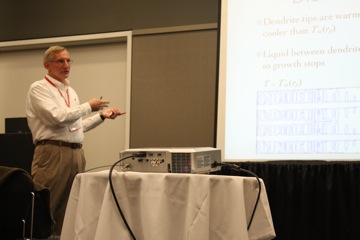
| Frost damage to concrete is a serious problem that has been intensively studied for decades, yet the mechanisms are not clearly understood. Salt scaling seems to result when a crack in a layer of ice penetrates slightly into the concrete and removes a chip. The phenomenology of scaling, including the effect of solute concentration, air entrainment, temperature cycle, and thickness of the ice layer can all be explained using this model. Internal frost damage is more complicated, because several mechanisms may be involved. By examining the way that ice nucleates and propagates in the pores, it is possible to evaluate the relative importance of factors such as crystallization pressure, hydraulic pressure, ice wedging, and trapping.
(George W. Scherer received his B.S. and M.S. degrees in 1972 and his |
